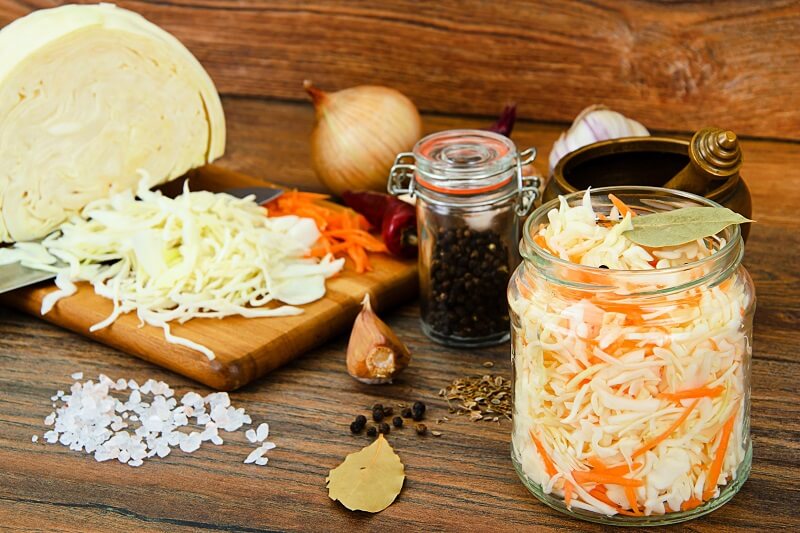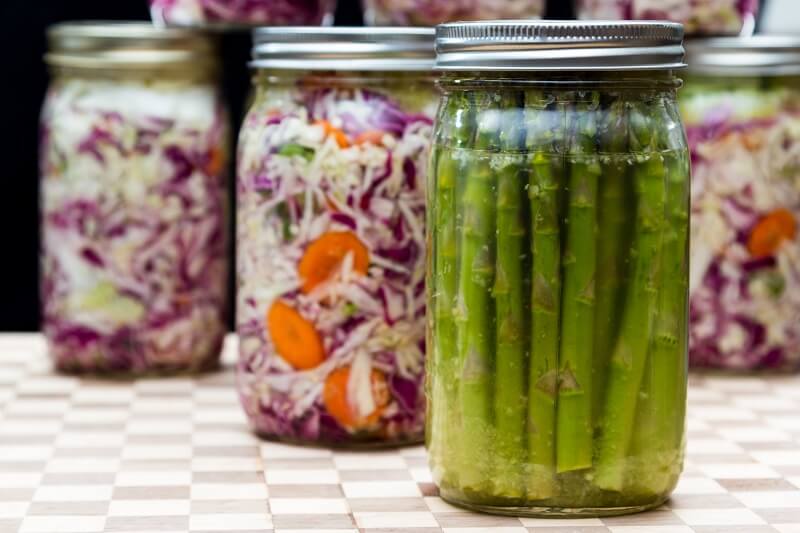Fermenting has been enjoying a renaissance in recent years, and the process of acidification and fermentation is a delicious and healthy way to get to know vegetables.
You don’t need any special equipment to ferment, so it’s worth a try for everyone. Say goodbye to vinegar-flavored, but otherwise tasteless pickles; there’s no need for anything extra, the beneficial bacteria do all the work. In fact, it’s not just the vinegar you can forget, you can also forget the sugar – fermenting doesn’t put even a minimum amount of sugar into your body.
Fermented vegetables contain no preservatives, so they’re good for your health and easy on your stomach. Vegetables can still be stored for a long time this way. The other healthy method is to freeze vegetables and fruit, which also preserves their vitamin content.
Fermenting vegetables makes them more digestible, as the parts of the skin that may be difficult or impossible to digest are broken down by beneficial bacteria. The vitamin content of the vegetables is also better utilized this way, because during fermentation their ‘defense lines’, i.e. tougher cell structures break down, and they become easier to digest. It is not by chance that sourdough bread is easier on the stomach than yeast bread, since it is also fermented.
It’s worth preserving seasonal vegetables now so that in winter, when the market is not exactly full of fresh, vitamin-rich ingredients, you can just take a jar off the pantry shelf and the pickles inside will provide you with vitamin C, zinc and iron, making you more resistant to disease. Make sure you keep an eye on seasonality here too: always ferment vegetables that are in season.

The most popular fermentable vegetable is cabbage; if you like something a little more exotic try Korean kimchi. It’s also worth fermenting asparagus, since its growing season is so short. You can eat fermented vegetables not only as an accompaniment to main dishes, but also on their own, and their juice is drinkable and full of valuable nutrients.
Make sure that, as with other canning methods, your jars are very clean. Cut the vegetables into thin slices, then layer them neatly in clean jars, sprinkling salt continuously over them. For example, use 30 grams of salt for a kilogram of cabbage. Make sure that no damaged parts of the vegetables get into the jar.
When a jar is almost full, to about 80 percent, pour some water to make it 90 percent full. Seal the jars airtight, because if air gets into them, the vegetables will spoil. Always smell the contents when you open a jar, and if you whiff a funny, bad smell, discard the contents.
Store the jars in a dark place at 20-25 degrees. After a few days, the water will start to bubble and turn cloudy, indicating that the fermenting process has started. Always store opened jars in the fridge.


